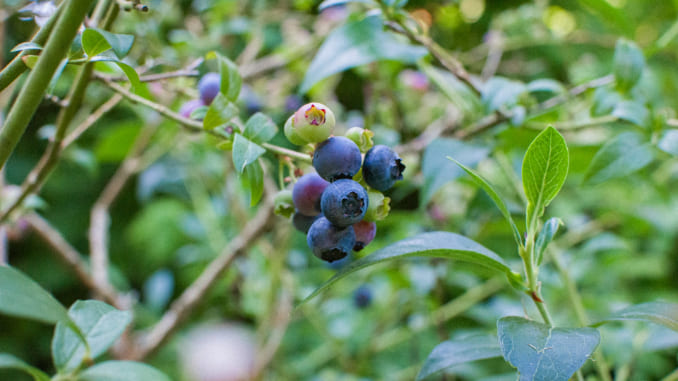Try Foraging These Plants, Depending On Where You Live
Photo by Nicole Logan/Unsplash Food Lists Foraging
Want to save money on groceries? Or just want to learn more about the plants that grow in your own backyard? You may want to try foraging. Foraging, or the process of searching for edible plants and other food, used to be how humans acquired a significant portion of their calories. Some people still feed themselves largely by foraging. Today, though, with many of us just a few blocks away from grocery stores teeming with picture-perfect produce, foraging isn’t as ubiquitous as it once was. But by re-learning about the plants and other edibles around us, we may come to better understand our food system and our bodies.
Before you go out into the woods and start snacking on random, unidentified mushrooms, though, it’s important to know the basics about foraging. Experts say that you should be 100% sure what a plant, mushroom or other object is before touching or eating it—this isn’t the time or place to be taking chances, as your health could be at risk. Additionally, foragers should only take what they need, and they should always leave a portion of what they’re foraging; don’t get greedy. If you’re not taking the whole plant, pick carefully so as not to damage it, and pay careful attention to the root system to avoid disturbing it. And of course, make sure you get permission before foraging on private property.
If you want to get some foraging experience under your belt before you go off on your own, look for foraging groups in your area. These groups can better help you identify edible plants and can help you gain confidence in your foraging skills.
Now that you know where to start, let’s take a closer look at the plants and fungi you should be on the lookout for in your region in the United States.
Northeast
Wild garlic, which looks and tastes similar to the garlic you’d find at the grocery store, can be identified by its green, grass-like tops, which sometimes feature blooming purple flowers. Although ramps get plenty of press, appearing on seemingly every single upscale restaurant menu in the Northeast every spring, wild garlic doesn’t get quite as much hype, which means it’s less likely to be over-harvested. In fact, it can be considered invasive in some areas, so it’s a good candidate for foraging.
Garlic mustard, also an invasive species, tastes like a cross between mustard greens and garlic, as the name suggests. It starts popping up in early spring, usually around March, and can be identified by its kidney-shaped leaves.
Dandelions are a solid option for foraging if you’re not yet an expert at identifying other plants. The bright yellow flowers are easy to identify, and they’re ultra versatile in the kitchen. I love adding them to baked goods for a pop of color and a mild floral flavor. You can also eat the greens, but you may want to cook them before consuming, as they can be incredibly bitter.
Southeast
Wild blueberries may not be as large as their store-bought counterparts, but their flavor is unparalleled, transforming from bright and acidic to complex and sweet as the season marches on. Since most people already know what blueberries look and taste like, there may be less of a chance that you’ll misidentify this plant.
American persimmons are a treat that grow along the East coast, including in Southern states. These orange fruits are round and a bit smaller than their commercially produced cousins, and they should be harvested when the skin is just beginning to wrinkle and the flesh inside feels slightly soft. They can be acidic, so you may want to pair them with something sugary in a dessert.
Chanterelles, with their yellow-orange color and their mild but earthy flavor profile, are a huge treat. They can be expensive when you buy them from a farmer’s market, so taking the time to forage them is well worth the effort. Their shocking color makes them easier to spot than other types of mushrooms.
Midwest
Black cherries are a forageable treat you may come across in the Midwest, and with their bold color and mouth-pucking flavor, they’re a late-summer indulgence that’s undeniably pleasurable. Although they can be included in a wide variety of recipes, ranging from cherry-infused green tea to cherry galettes, they’re incredible all on their own as well.
Wild spinach identification takes some practice, but once you learn to recognize the signature shape of the leaves and the white powder running down the stems, you can eat this forageable green raw. The flavor is mild (but, in my opinion, more interesting than that of cultivated spinach).
Mulberries can be difficult to harvest commercially, which is why you probably won’t see them at a grocery store. When you can forage, them, though, they make for delicious summertime snacking. Look for mulberries growing mid-June through August in the Midwest.
West
Prickly pears can be identified by their signature pink fruits, which are fairly recognizable. As the name suggests, though, these plants are prickly, and you’ll want to work to avoid the spines as you collect the fruit. They can be tricky to process, but for those who are willing to go take the time to work with them, the juice is totally worth it.
Fennel is related to carrot, but this green vegetable has a fresher flavor than its colorful cousin. You can find it up and down the California coast, where it can be identified by its bright yellow flowers and signature licorice aroma.
Seaweed can be found along the coast and is easy for most beginner foragers to identify. It requires some processing, but its high nutrient content makes it a solid choice for those looking to work some extra nutrition into their diets through foraging.
Samantha Maxwell is a food writer and editor based in Boston. Follow her on Twitter at @samseating.